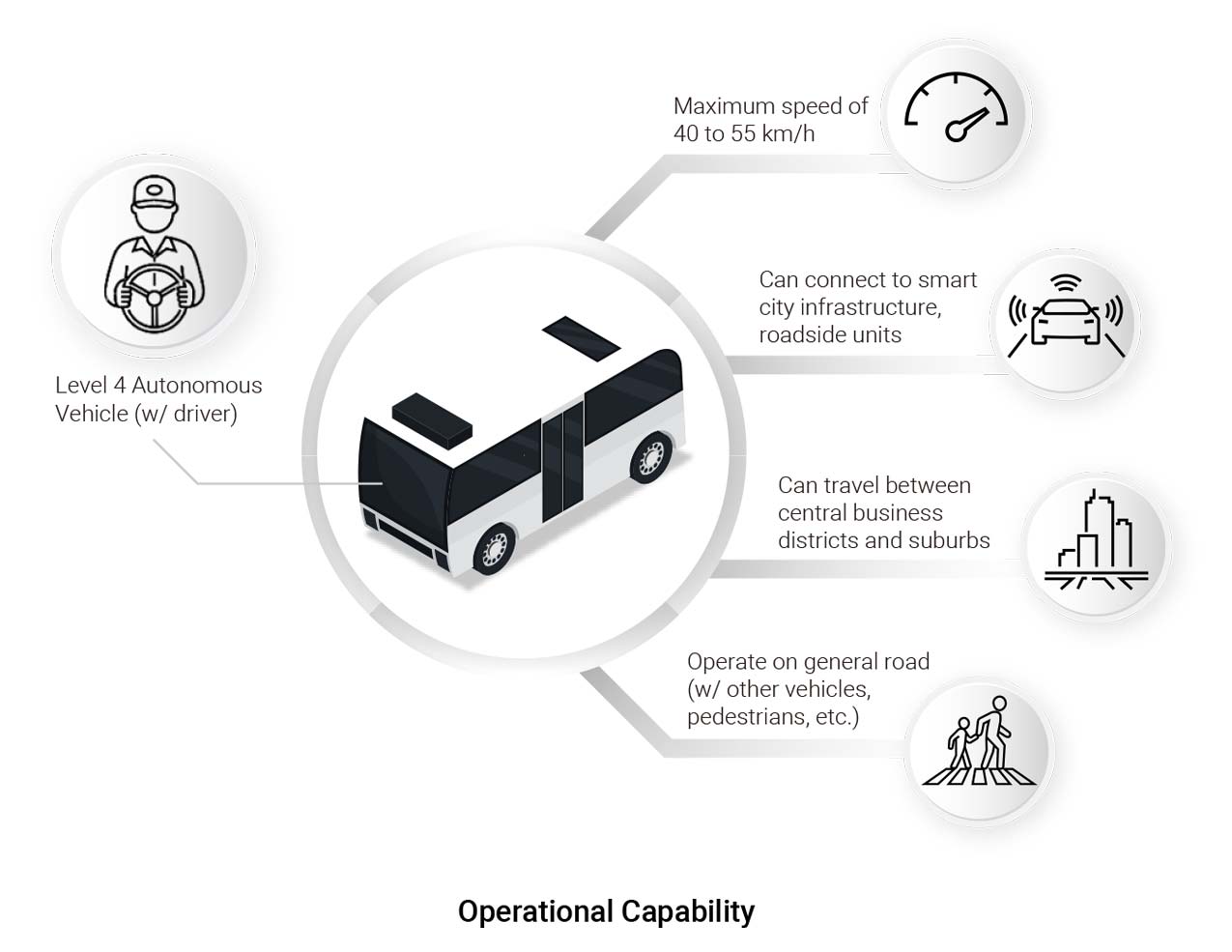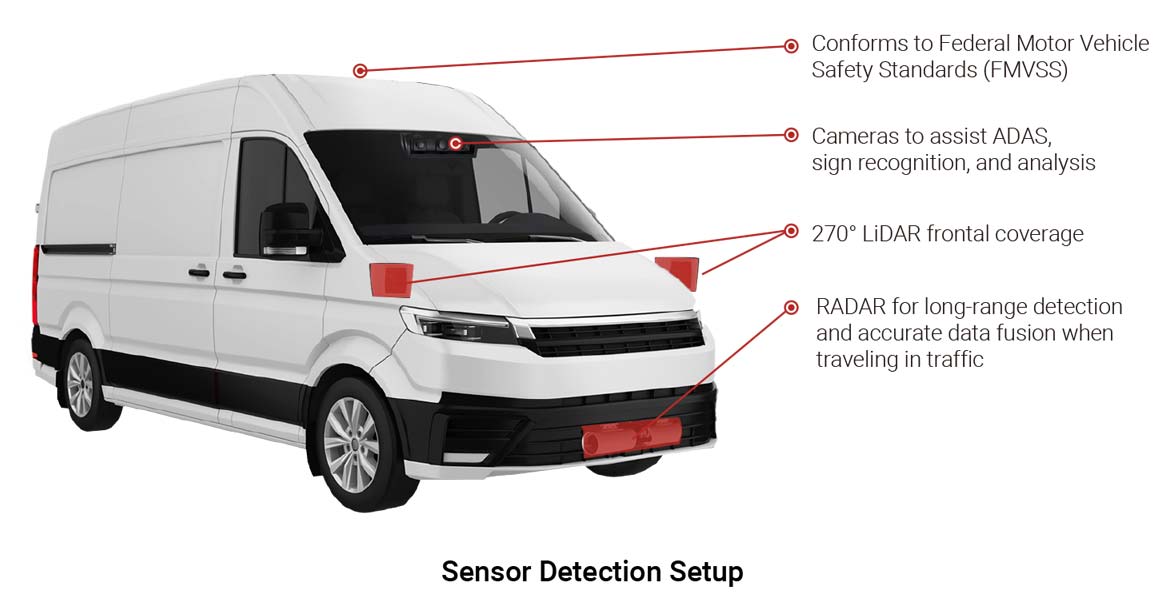Overview and application
The idea was to create an autonomous vehicle without artificial intelligence technology and hence saving hardware costs. Acting as a shuttle bus, the Autonomous vehicle needs only to travel from A to B, and vice versa. The vehicle has sensors and cameras to see and detect, but because there is no powerful AI technology for real-time inference, so all objects are acquired via sensors, cameras, LiDARs and are processed by a software algorithm that rely on CPU processing. As the vehicle will only be traveling within a specific area/ suburb, the vehicle to everything (V2X) through WiFi or 4/5G wireless network also plays an important role in data feedback. The V2X wireless communication can be utilized to warn the traveling vehicle of incidents or traffic conditions up ahead so the autonomous vehicle can prevent traffic jams by taking an alternate route.

Challenges
The application needs a computer with a CPU powerful enough to process imagery data that is typically processed by the more powerful GPU. It does not have to match the GPU in terms of raw processing power but it does need to process imagery data in time for the autonomous vehicle to react or make decisions. The computer needs to offer a variety of connectivity to connect to sensors, cameras, LiDARs, RADARs, etc.

V2X is a must as it enables the vehicle to connect to wireless networks. It is essential in this application as it is heavily dependent on wireless data input from surrounding stations and sensors for ahead-of-time information.
As is with any computer deployed in a vehicle, the computer must endure constant shock and vibration, accept the vehicle’s electric power deliveries, and may need to withstand temperatures under the weather
Solution
"Our engineers have often used a Nuvo computer from Neousys that runs on a quad-core Intel Core i7 in its vehicles because of its ruggedness and reliability. As we move forward, we'll need a rugged but strong processor board that is more compactly built, and we'll need two for failover," is a direct quote from the customer. The Neousys Nuvo series rugged embedded systems come in an all-around variety to suit all industrial needs. There are even low-profile versions that are compact in dimension, but do not compromise on performance as they can still install an i7 processor and operate with optimum performances.
Neousys Nuvo rugged embedded systems feature plenty of PoE+, GigE, and USB3.2 Gen1 ports to connect to sensors, cameras, LiDARs, etc. They also have internal expansion slots for installing WiFi 6/ 5 or 4/5G wireless communication modules, making it the ideal onboard computer system for the autonomous vehicle applications.
Other standard features of the Neousys Nuvo embedded systems include wide temperature operation, ignition power control, MIL-STD-810G shock and vibration certifications.








